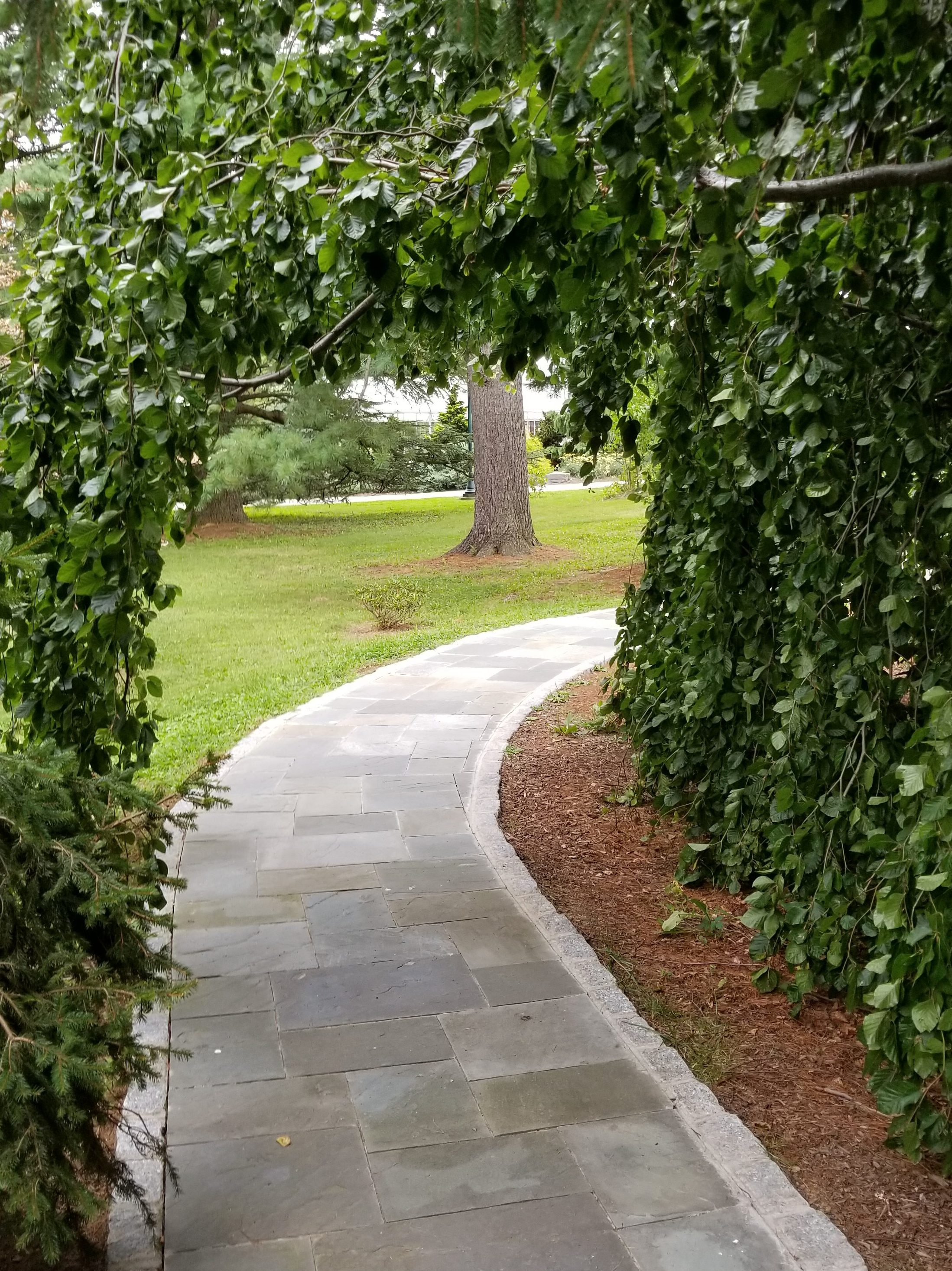In their highest boughs the world rustles, their roots rest in infinity; but they do not lose themselves there, they struggle with all the force of their lives for one thing only: to fulfill themselves according to their own laws, to build up their own form, to represent themselves. Nothing is holier, nothing is more exemplary than a beautiful, strong tree. When a tree is cut down and reveals its naked death-wound to the sun, one can read its whole history in the luminous, inscribed disk of its trunk: in the rings of its years, its scars, all the struggle, all the suffering, all the sickness, all the happiness and prosperity stand truly written, the narrow years and the luxurious years, the attacks withstood, the storms endured.
Hermann Hesse, Bäume. Betrachtungen und Gedichte
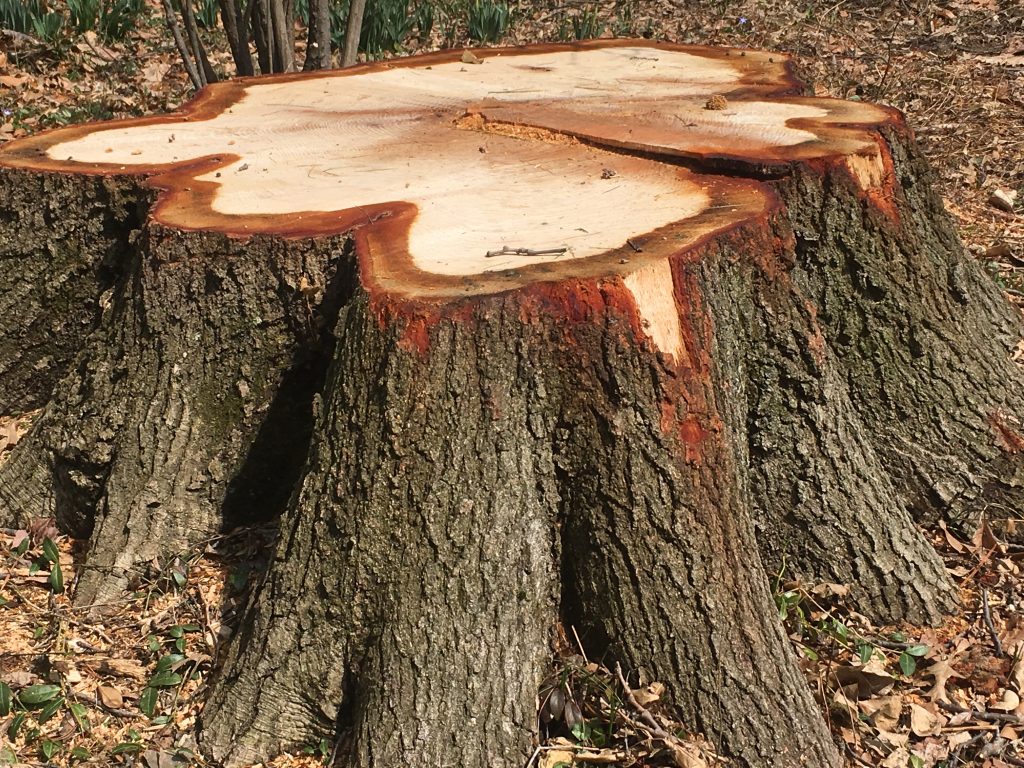
Red Oak stump – photo Kathleen Salisbury
In February we had to make a couple of tough decisions. These are decisions we do not take lightly and decisions that we do not make in haste.
We had to take down two large trees in the Arboretum.
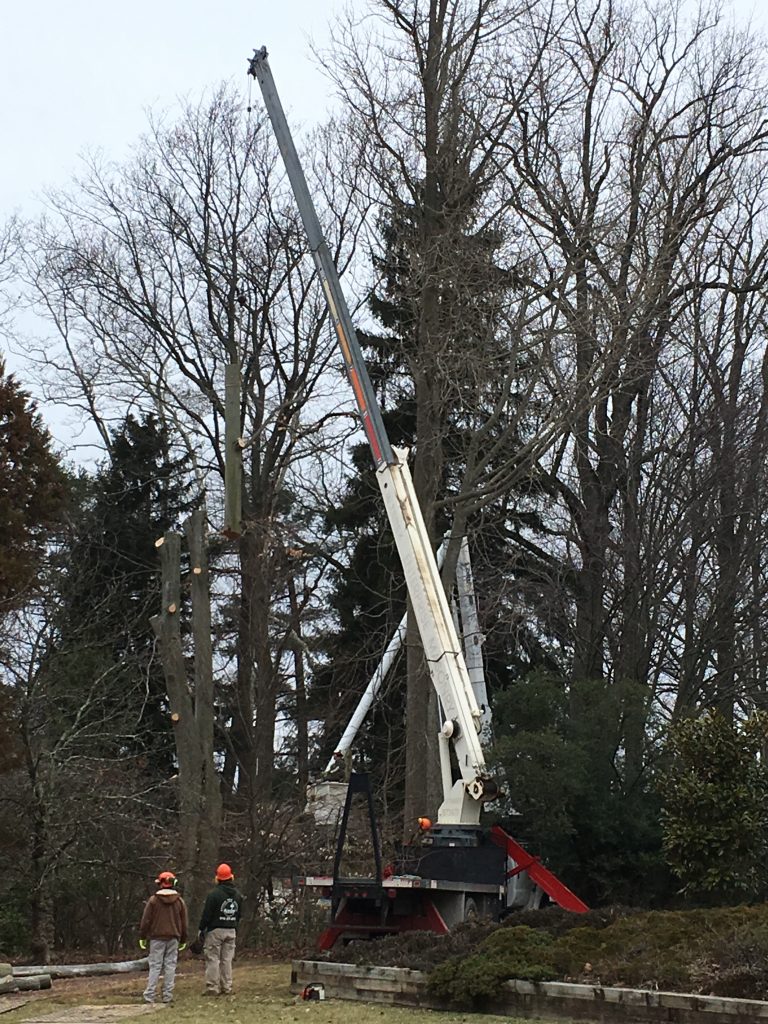
American Beech removal – Photo Kathleen Salisbury
Those of us managing plant collections are here because we love plants and we want them to thrive. We enjoy seeing people marvel at the size of an old old tree. In some cases, public gardens like this are the only place people get to see the potential for grandeur trees have. Removing them is not a decision we take lightly or that we really want to make. Not only does removal mean a loss in our collection it also means high expense. Removing large trees is expensive and alternatives are always sought before this decision is reached.
In my experience working in park systems with old, large trees, this is decision is always questioned and rightfully so. People become attached to these trees, and more attached the older and larger the trees are. Trees do not live for ever and in most cases, as the trees age they start a phase of decline in which they are more susceptible to insect infestations, rots and other stressors that significantly increase their rate of decline.
When we, as stewards of our trees, notice this happening we must make some informed decisions. Our decisions are guided by the answers to the following questions:
- Is this tree savable?
- Can the problem be treated? Can the damage be repaired?
- Can we afford these interventions?
- How long will this prolong the life of the tree?
- Are there safety concerns?
- If we leave the tree to fall naturally what will the collateral damage be?
- Is the tree near paths, drives, structures that will be damaged when parts or entire trees fall?
- Is this tree horticulturally or culturally significant?
- While all trees are special, some have stories and meanings attached to them in the community, some are the only ones in the area, or the largest, oldest of their kind.
To find the answers to these questions we ask professional arborists specializing in plant health care, to consult on the future of the tree, we ask the community about the significance of the tree and we work with facilities to determine the collateral damage should the tree be left to fall naturally.
The two large trees we had removed were a Red Oak and an American Beech.
The American Beech (Fagus gradifolia) had been in a state of decline for years, with large sections of the canopy dead or dying. Some previous removal of deadwood had been done and we had planned to let this one stand for as long as we could because it is a large specimen in our woodlands. We were keeping an eye on it. This winter, as I walked past this tree with my students, I noticed a large weep coming from the point where the co-leaders connect. The class and I went to take a closer look at the tree and noticed it had a large crack at the intersection of these two large trunks. At this point I notified facilities who brought in a consulting arborist. We all agreed that because of the existing decline and poor health of the tree, trying to save the tree by cabling the branches together would not work. Because of the size of the tree and the potential for it to damage other large trees in the woodland area if left to fall on its own, we decided to have it removed. Upon inspection of the trunks after it was cut we noticed the trunks were hollow, indicating significant rot.
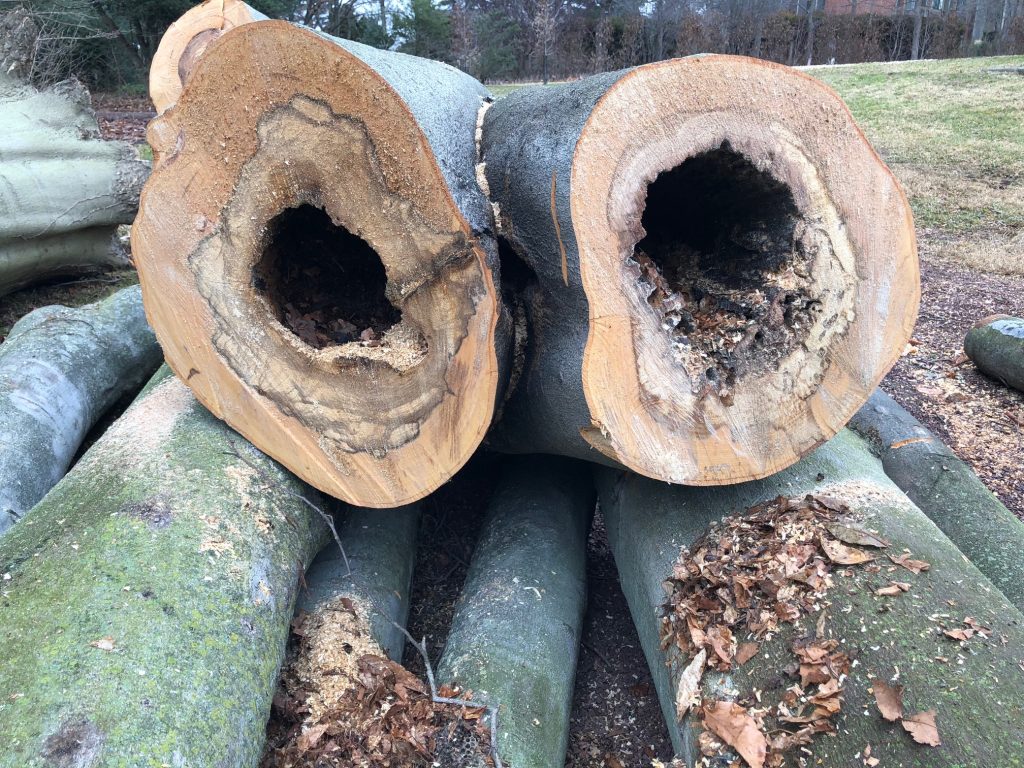
American Beech – Photo Anne Brennan
The Red Oak (Quercus rubra) was also in a state of decline for a number of years and had previous trimming done to remove dead branches in the canopy. This tree was in a precarious location – along busy Meetinghouse Road, over a fence and along a trail. After consulting with the arborists and facilities once again the tough decision was made to remove this tree for safety reasons. The wood of this tree looked solid but the signs of distress indicated disease that could not be treated.
I am a tree hugger. I walk up to large trees and wrap my arms around them. I cannot help myself! I am in awe of their stature and am curious to learn their stories. I think about what they have witnessed during their lives and who has celebrated beneath them. I think about all of the wildlife that calls the tree a part of its daily life, providing food, shelter, shade. I think of all of the ecological services this large tree provides holding soil, cleaning water, producing air. None of this is lost on the people making decisions here to remove trees, I can guarantee this.
The other thing I can guarantee is that we will continue to plant trees in the Arboretum. We will continue to do the best was can for those in our care and we will continue to build our collection. We will be doing more succession planting so when it comes time for the large trees to come down there are others waiting in the wings to take their places.
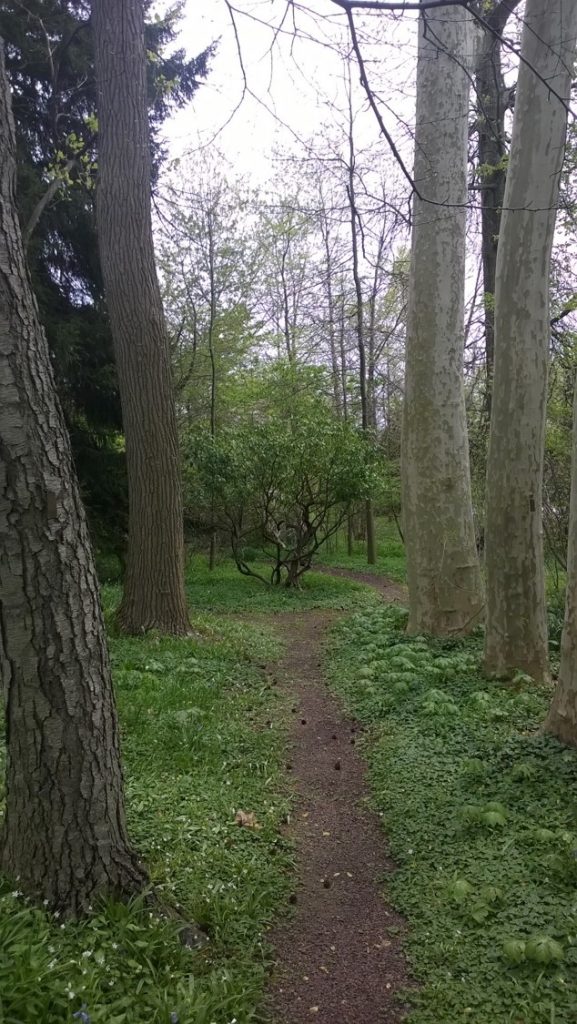
The Woodland Garden – photo by Benjamin Snyder

